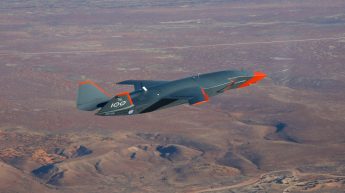This story from the Australian Aviation archives comes from December 2008, when Ellis Taylor wrote about 2FTS at Royal Australian Air Force (RAAF) Base Pearce in Western Australia.

The operational aircraft of the Royal Australian Air Force (RAAF) and Royal Australian Navy (RAN) require their pilots to be able to handle a number of advanced flying tasks at once, a skill that they learn through the RAAF’s Number 2 Flight Training School (2FTS) at RAAF Base Pearce, northeast of Perth.
For students who have mastered the basics of flight at the Basic Flying Training School (BFTS) in Tamworth in CT-4 Airtrainers, 2FTS teaches advanced flying techniques, such as instrument flying, formation and advanced navigation to allow the recruits to gain their “wings” and then move into an operational squadron.
“We’re still in the business of producing high quality graduates for all the operational squadrons of the Air Force and Navy,” 2FTS commanding officer Wing Commander John Wood told Australian Aviation.
To cater for this, the school runs four courses per year, each comprising 22 students. These courses currently run over 37 weeks and include a mix of theory, computer based training and practical flying in the school’s Pilatus PC-9/A aircraft.
However, the course has changed over the years, and is constantly updated to ensure it meets the requirements of the operational squadrons of the RAAF and RAN. Indeed, in recent years the course has been trimmed down which has helped clear a backlog of pilots from BFTS who were waiting to complete their training.
But as WGCDR Wood points out, this shorter course has not had an impact on the quality of 2FTS graduates.
“I guess that’s an indication of the quality of the instruction here, that we’re able to achieve the same or better standard even though the syllabus has been rationalised.”

Under the current syllabus, students start their tuition at 2FTS with four weeks of ground school which focuses on a number of aspects of flying the PC-9, emergency procedures and other key elements before they take their first rides in the aircraft.
“Ground school is pretty intensive,” said Midshipman Ryan Cross, a Navy pilot who was a student on 215 Course at 2FTS when Australian Aviation visited in October.
“It’s eight lectures a day and you’ve got to absorb a lot of material. It is good material and it’s presented well so that when you face your exam you’re definitely ready for it, and it just sticks with you.”
Following the ground school, the students then take to the air between weeks six and seven with a qualified flying instructor (QFI), before making a very quick transition to solo flying.
“Ride Six is their check ride to go solo, so they don’t get a lot of time to get competent enough to go solo,” said WGCDR Wood, who added that the solo qualification flights are done at the nearby satellite airfield at Gingin.
“We then progress them to an instrument rating test followed by a basic general handling test. That’s basically the conversion phase.
“From there they start moving into Phase Four where we introduce them to navigation, formation, increase their general flying skills and that culminates in an advanced handling test, a formation test and then a final nav test.”
This leads on to Phase Five, where students get the opportunity to apply their knowledge in a series of combination sorties, where they deploy to airfields as far away as Albany and Geraldton and fly multiple missions, usually transiting back through Pearce. These are designed to demonstrate all the elements of the course, including formation flying, navigation and instrument flying all at once.
“You’ve got to obviously think about a lot of things, trying to put everything you’ve learnt together and make it work out for you, but it’s just awesome fun in the end,” said Officer Cadet Carlene Heise, who was due to graduate with the rest of her 213 Course colleagues in late November.
“We’ve learnt how to do the basic instrument flying and now we’re applying it to new and different situations where we’re expected to make decisions and be the aircraft captain and apply what you’ve learnt to a new and changing situation,” she said.
It is at this point that students start to be assessed for their suitability for the different aircraft types operated by the RAAF and RAN. This selection process is based on factors such as course performance, the number of positions available on the various aircraft types, and their own personal preferences.
“Mid-way through Phase Five we’ve been able to look at them closely enough to determine whether they’re going to fast jets or the other types of aircraft,” said WGCDR Wood.
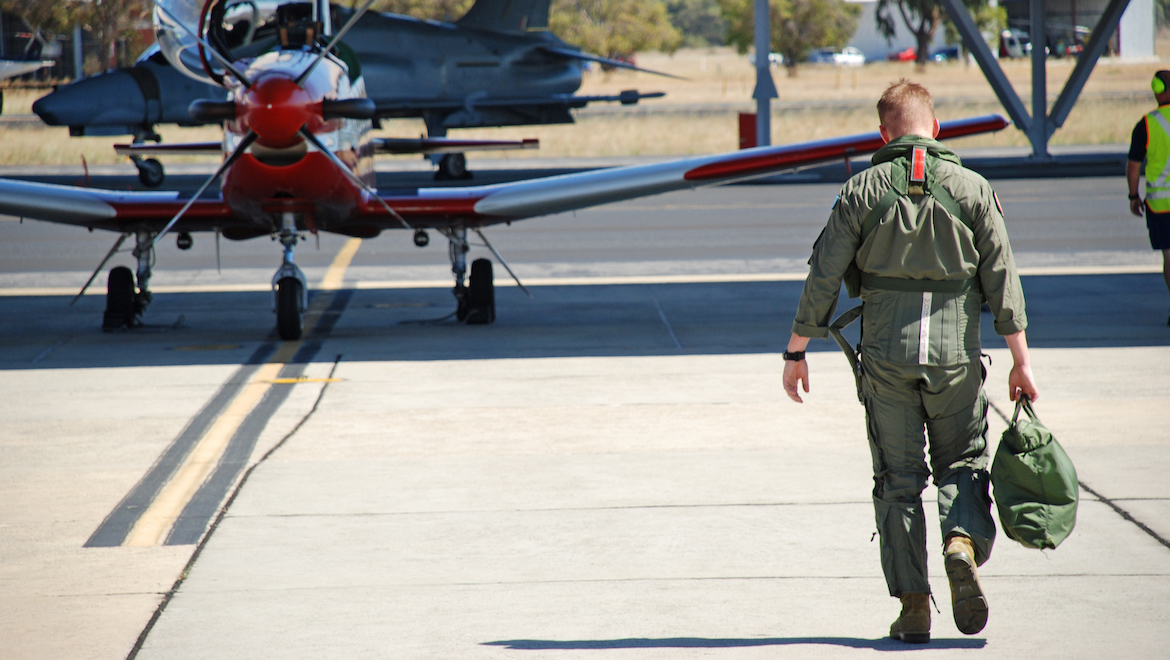
Interestingly, the selection of pilots for fast jets is not limited to RAAF pilots. “Just off the last course, one of the Navy students was dux of course and we offered him fast jets and he took it,” said WGCDR Wood, who is himself a former F-111 pilot.
Upon completion of the combination sorties, the phase six sees students return to Pearce for more instrument and general flying tests for up to six weeks before graduating and receiving their wings, and completing their final “thunderbird” formation flight along the Perth coastline.
As could be expected, the students are constantly graded throughout the 37-week course, explained WGCDR Wood.
“Anything which is previously taught, they need to maintain an ongoing standard and improve on that standard and that’s where the assessment process takes place.”
For the students undergoing courses such as Midshipman Cross, there are both similarities and differences between the courses at BFTS and 2FTS.
“The structure it takes is very similar. I thought that the material we’re served here is so direct and relevant to what we’re doing. At BFTS it was very broad about aviation in general and here it’s more specific to flying the PC-9 in our operations here,” he said.
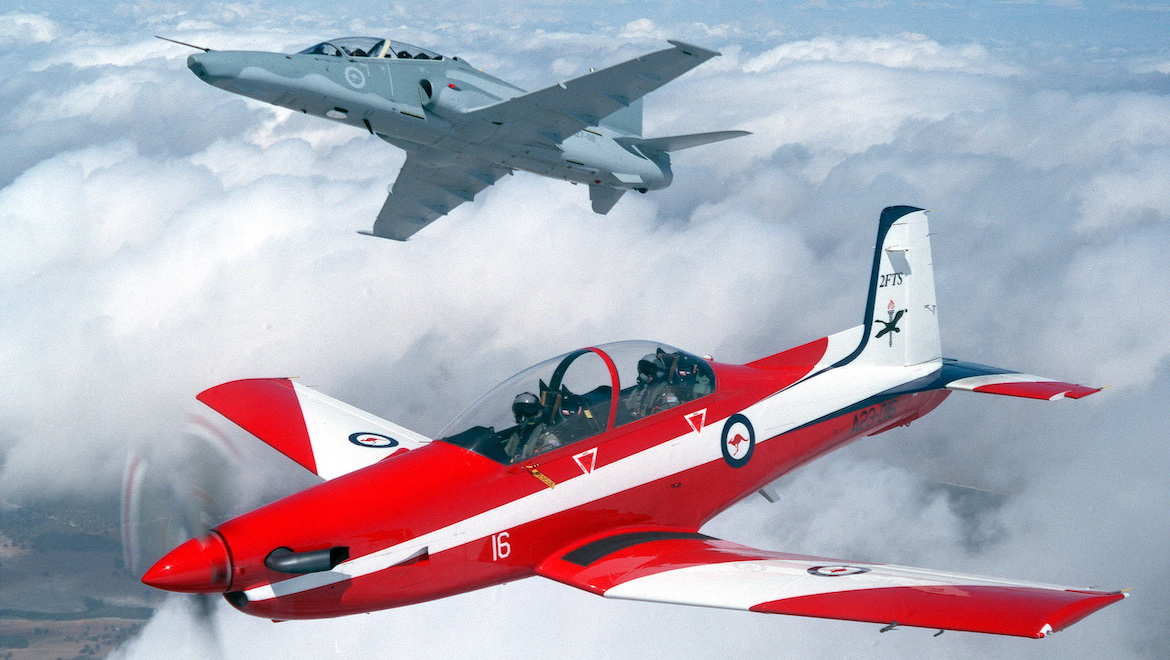
For the students, it can be quite a fast-paced environment, which can prove difficult for some.
“2FTS produces very high quality graduates and the training can get quite demanding. If students encounter difficulties, they are given remedial training with a very experienced instructor to help them attain the required standard, and progress on course. If they can’t meet the standard following that, that’s when the suspensions occur,” said WGCDR Wood.
The day can also be busy for the individual QFIs involved, such as Flight Lieutenant Beau Pitcher.
“I do two instructional sorties a day,” he said. “In amongst that you’ve got your briefs, debriefs, report writing and maybe a mass brief or a tutorial. Generally the day’s pretty full. There’s not too much spare time, but it’s enjoyable. It’s not too slow and not too busy for you.”
And while the course is designed to be challenging and stimulating, 2FTS officers ensure there is sufficient time for the students to socialise with their instructors and others from the squadron.
“A lot of guys will go out of their way to have non programmed events like just talking with students,” said FLTLT Pitcher.

Flying from Pearce
Operating a major training operation from Pearce presents some challenges to 2FTS’s operational staff which have to be appropriately managed.
One of the biggest issues is managing the airspace at Pearce, which is only 30km from the increasingly busy Perth International Airport.
“Our airspace is very constrained, and there are very strong westerly winds which creates problems with civil air traffic,” said WGCDR Wood, who added that weather can also be a limitation. “We very closely watch the weather because we are training students and there are certain conditions where it is prudent to not fly,” he said.
In summer, flying is suspended when the temperature reaches over 38 degrees as the heat in the cockpit of the aircraft can become unbearable. Other factors also come into play during winter.
“In winter when we’re constrained to operating visually above the cloud or in clear areas, then we have to limit how many aeroplanes are operated at the one time.”
As a result of these limitations, 2FTS has to ensure that if operations are held up for any reason that it can still recover and meet the deadlines for graduating students from the course.
“There is about two weeks worth of contingency built into the course. But we’re also very wary of pushing the students too much,” said WGCDR Wood.
Pearce is also home to 79SQN which operates BAE Hawk 127s in the lead-in fighter role, and those students who take up fast jet places usually transition straight from 2FTS to 79SQN.
Pearce is also shared with the Republic of Singapore Air Force (RSAF), where its 130 Squadron conducts its Basic Wings Course using the new Pilatus PC-21, which replaced Siai-Marchetti S-211s in July.
2FTS has a good relationship with its RSAF counterparts, although as both are busy units, they also tend to keep to themselves.
“We share the airspace, we share the two runways here and the runway at Gingin,” said WGCDR Wood.
“They have their individual living quarters and messing arrangements but we always invite them to our graduation ceremonies. Also, every six months we run a two-day flying instructors conference, and we invite the Singaporeans along to share ideas and experiences.”
But cooperation between the two units is set to strengthen, with 2FTS and 130 Squadron recently starting a program which will see a flying instructor exchange between the two. WGCDR Wood hopes this will add some new perspectives to 2FTS’s operations.
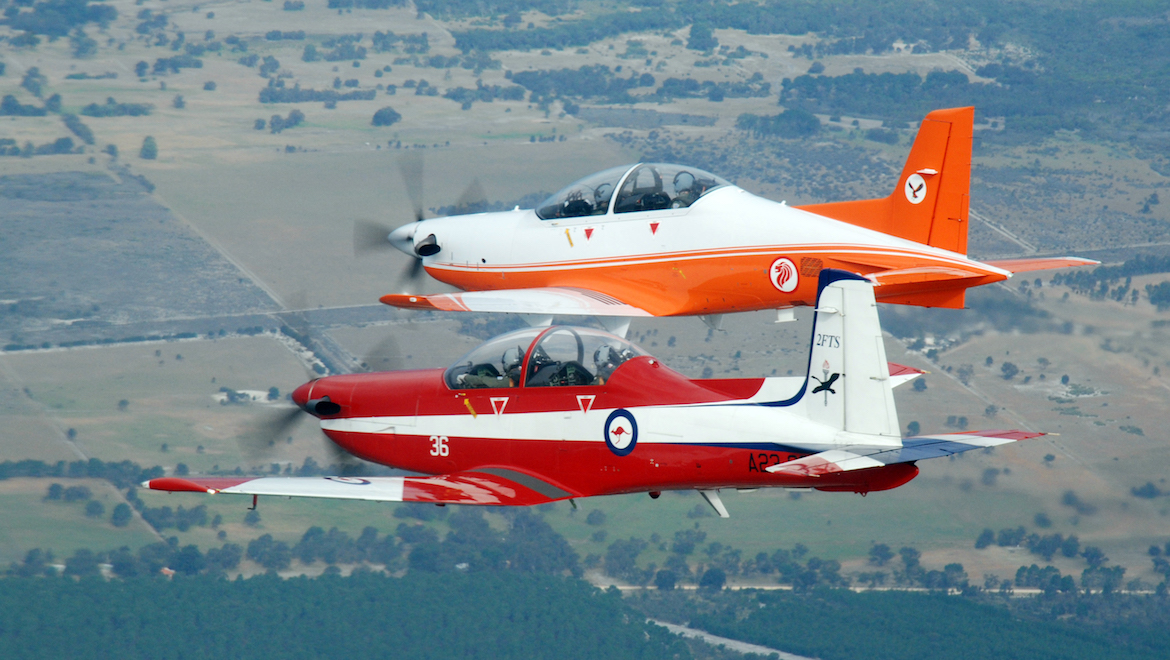
Aircraft
Since the early 1990s, 2FTS has been equipped with the Pilatus PC-9/A which replaced 1960s era Macchi MB-326 jets. And although the oldest PC-9s are now nearly 20 years old, WGCDR Wood says it still presents a strong platform for 2FTS’s role of preparing pilots for the RAAF and RAN.
Pilots say the PC-9 offers a great step up from the CT-4 trainers used at BFTS, and allows students to become more familiar with handling a fast paced environment as would be expected on a frontline RAAF or RAN unit.
“It’s very fast, so much faster than the CT-4, especially coming home from the sortie, everything’s just going fast. It’s a great experience,” said Midshipman Cross.
As with the other PC-9s operated by other units within the RAAF, 2FTS’s aircraft have been supported by WA-based company Airflite, which has had operations at Pearce and at East Sale in Victoria, since 1994.
“The scope is PC-9 maintenance and the level is operational and deeper level maintenances,” explained Cameron Macdonald, Airflite’s chief engineer for its RAAF Pearce operations. “We do the on-aircraft maintenance, so things like rectifications from the flightline, right down to scheduled servicings.”
That maintenance extends far, with Airflite essentially providing a valet type service for 2FTS where the contractor always aims to ensure that of the 41 aircraft assigned to the school a minimum of 23 are available for the four waves of sorties carried out each day.
“It does require a certain degree of cooperation between operations and maintenance,” said Macdonald, who added that at times in the past it had not been possible to provide this due to major structural issues with the aircraft.
“Some structural issues with the PC-9s started to hit around 1999, and they came at a great rate of knots,” he said. “We saw a lot of cracking in the major members of the wing and the fuselage. It was a challenge to the logistics and maintenance system, and availability took a hit in the early 2000s.”
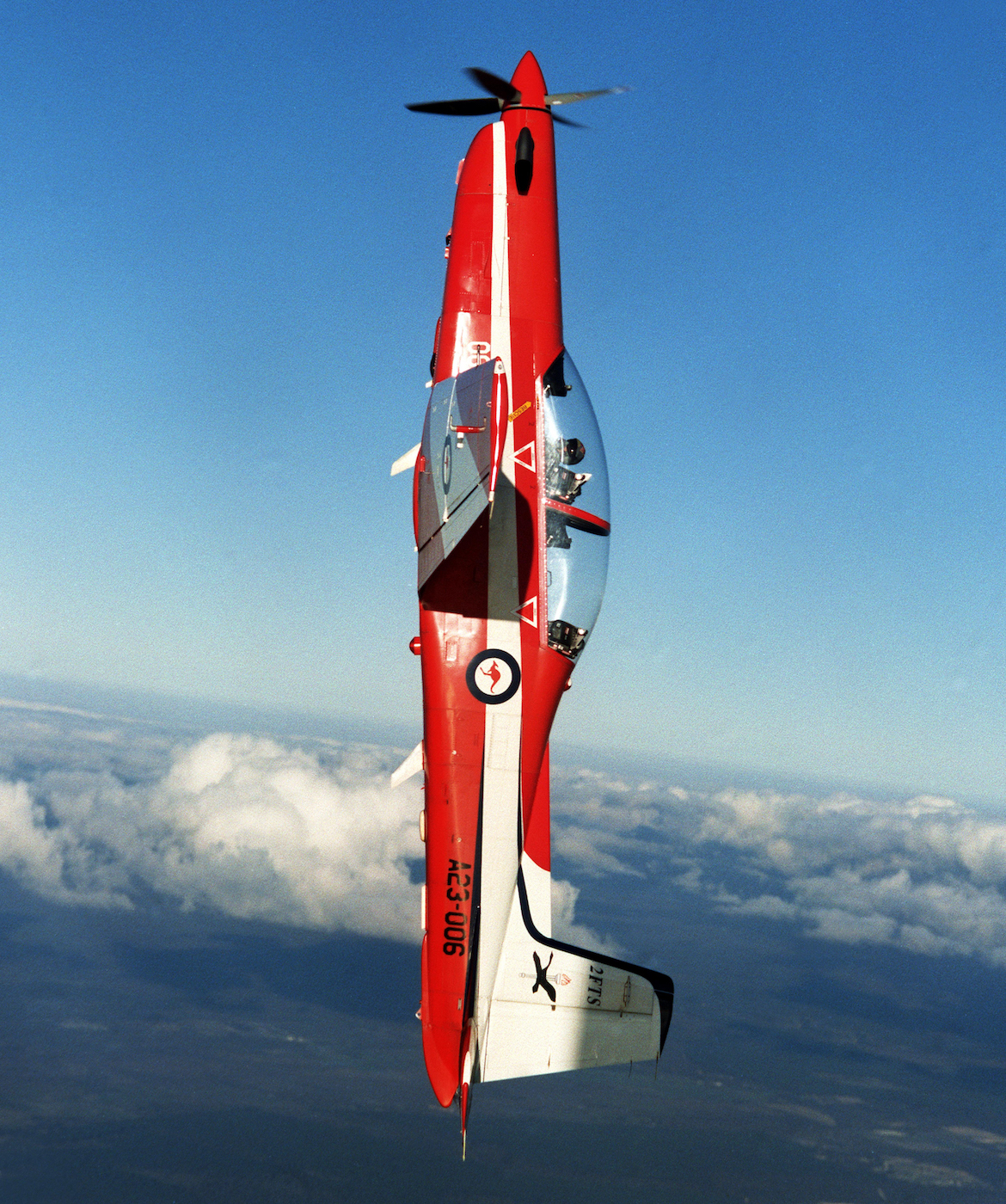
The response was to create a wing exchange program, which was developed in conjunction with the Defence Materiel Organisation’s Training Aircraft Support Project Office and Pilatus. PC-9 wings are exchanged for wings rebuilt at Airflite’s structures facility at Jandakot Airport, south of Perth. This is now conducted on all RAAF PC-9s which require it.
Other issues, such as scheduled R1 and R2 maintenance which can take the aircraft out of service for three and eight days respectively, also have to be managed.
“Obviously there’s aircraft that have to go into R-servicings and modification programs, so we have to go into ‘stagger management’ to manage the operating hours so you get a nice flow through the servicing check,” said Macdonald.
Macdonald, who is a former RAAF aircraft technician, explained that Airflite’s long association with the unit has made planning aircraft availability much easier.
“Our specialty is that we understand these operations, we understand the culture of 2FTS and it’s not so much the aircraft, it’s understanding the operations and how you respond to them.”
WGCDR Wood says that the relationship between Airflite and 2FTS continues to remain strong, with the company recently presenting an award to 2FTS to commemorate 200,000 hours of accident-free flying.
With the first PC-9s entering service in 1987, the aircraft’s age has been an issue for some, but Macdonald says that with proper management of the issues an older aircraft develops, it could still have a long future ahead of it.
“We have a lot of confidence in it. Fatigue wise, it could go till 2020, and any undoing of that would probably be from a systems point of view.”
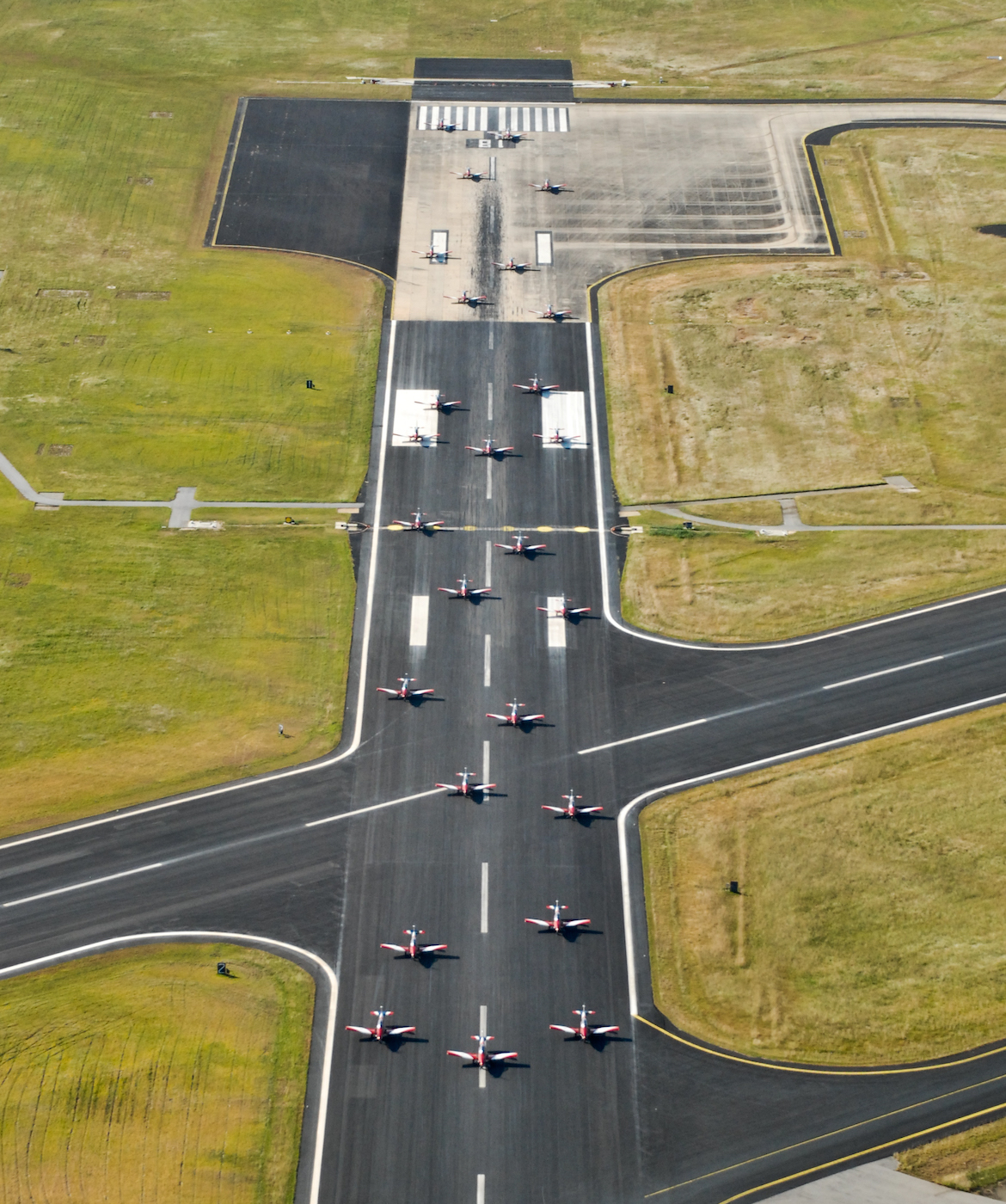
A new training system?
As with BFTS, 2FTS’s training function is likely to face some significant changes in the future as part of the ADF’s Air 5428 project, which could introduce a new training system for pilots from all three services.
“What we’re doing now is still producing the goods but maybe we could do it better in the future, and that is what the new Air 5428 will determine,” said WGCDR Wood.
One of the major issues which will be addressed under the project is a new aircraft type to replace the PC-9s, with the expected platforms to include the Pilatus PC-21, Embraer Super Tucano and the Raytheon T-6 Texan II.
Across the airfield, the RSAF’s Basic Wings Course – with its PC-21s leased and supported through a major training system contract with Lockheed Martin, and aircraft maintenance from Hawker Pacific – could point the way.
Although the RSAF’s first PC-21s have only arrived recently, they have gained some attention from the RAAF.
“Certainly I believe its got some of the aspects that we need,” said WGCDR Wood. “[But] like all aircraft, there are limitations. It would be a nice aeroplane and would fit in our mix, but there may be others which may do the job just as well or even better.”
WGCDR Wood also expects to see a greater use of simulators as part of the new training approach.
“Part of the new training system will have to incorporate simulators. That will save us some time in the aeroplane – you can never fully replicate what happens in the aeroplane totally, but certainly maybe we can save five to ten per cent of the syllabus in simulator flying,” he said.
While Air 5428 takes shape, the staff of 2FTS remain focused on producing pilots who are able to confidently take control of the latest aircraft in the ADF’s inventory, which WGCDR Wood says seems to be working well.
“I’ve just recently done a validation tour to all the operational units to which we are sending our graduates, and that has indicated that the squadrons are still very happy with the product. We’re very product driven here, we produce to what the squadrons want. Overall I was extremely happy that we’re doing what we need to do to produce what the ADF needs.”

Postscript: In September 2015, the Australian government said a Lockheed Martin-led consortium that included Pilatus and Hawker Pacific had been selected as the preferred tenderer for the RAAF’s Air 5428 Pilot Training System. The consortium would operate 49 Pilatus PC-21 training aircraft from RAAF Base East Sale in Victoria and RAAF Base Pearce in Western Australia.
This story first appeared in the December 2008 edition of Australian Aviation.


